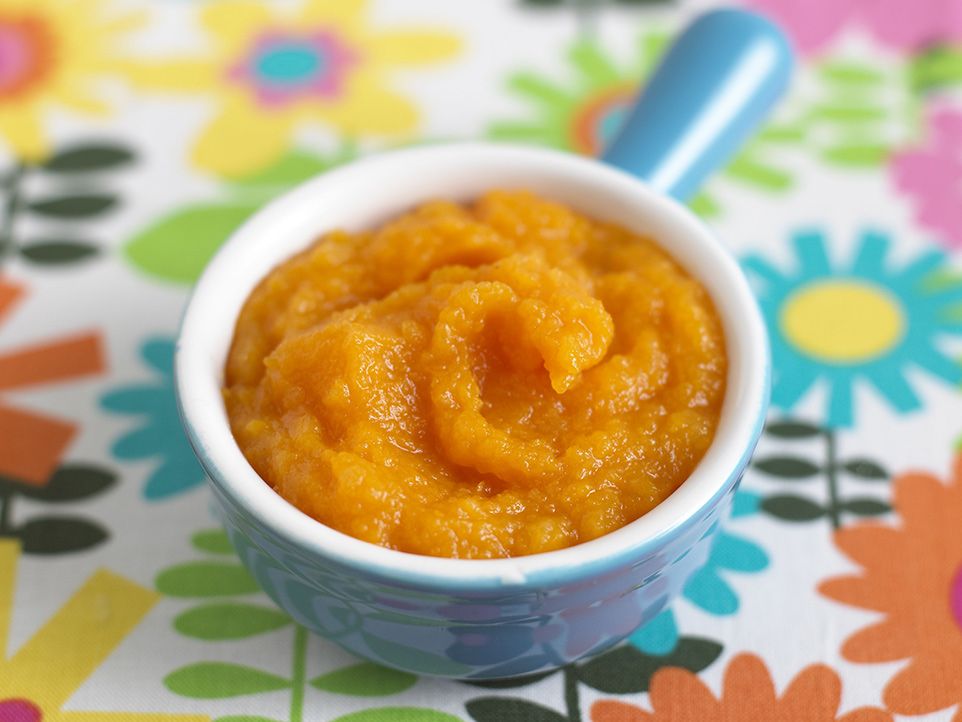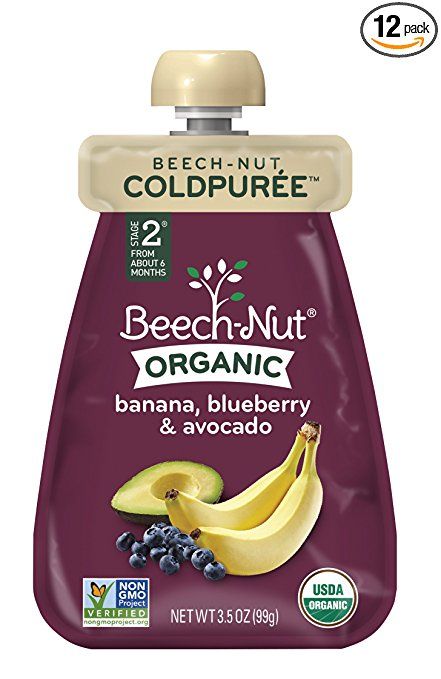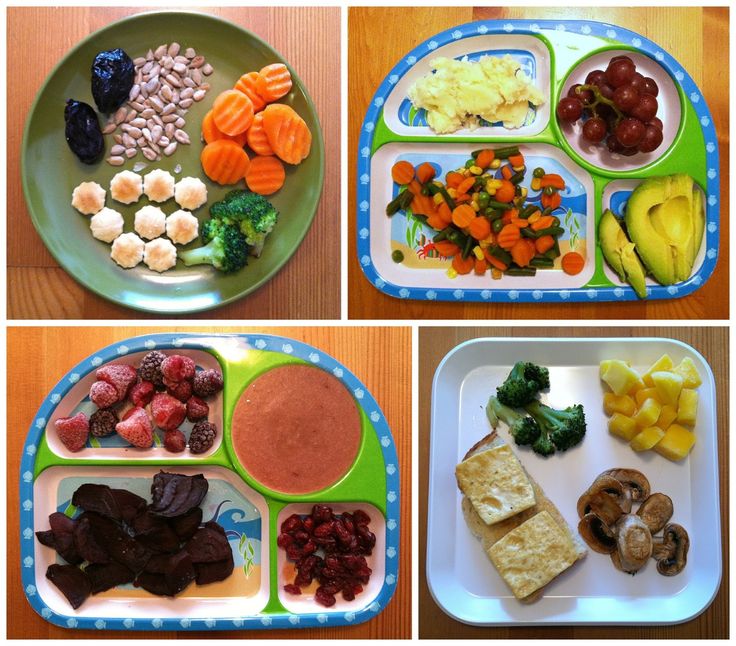What do you feed baby blue jay birds
Baby Blue Jays: All You Need To Know
What does a baby Blue jay look like?
How big are baby Blue jays?
Why do you never see baby Blue jays?
What is a baby Blue jay called?
What do baby Blue jays eat?
Do both parents feed baby Blue jays?
What do Blue jay eggs look like?
How long do Blue jay eggs take to hatch?
How many babies does a Blue jay have?
When do Blue jays lay eggs?
How do Blue jays feed their chicks?
How long do baby Blue jays stay with their parents?
Do Blue jays have helpers?
Blue jays (Cyanocitta cristata) have beautiful cobalt-blue plumage and distinctive head crests - they’re the most colorful of all the corvids and one of the most recognisable birds in North America.
Like all corvids, Blue jays are intelligent and resourceful, but what about baby Blue jays? This is a guide to everything you need to know about baby Blue jays!
What does a baby Blue jay look like?
Baby Blue jays are tiny when they hatch and are mainly grey with faint shades of yellow and pink. They’re blind with closed eyes and may be covered in small featherless naked patches.
At hatching
Baby Blue jays are mostly feathered when they hatch but may have naked featherless patches. They’re predominantly grey with pink/yellow plumage on their underside. Their eyes are shut and don’t open for the first 4 to 5 days.
While baby Blue jays will only squirm on their first day, they can shuffle around the nest by day 2. Blue jay hatchlings are tiny, just 50mm long or so.
Blue jay feeding chicks in the nest
Growth and development
Blue jays grow rapidly in their first five days, and their plumage gets noticeably darker, turning to olive. Blue feathers don’t start breaking out until day 14 or so and continue to grow until day 20 or so, at which point the jay fledges.
Full blue plumage development isn’t complete for another month or so after fledging. However, juvenile Blue jays are relatively easy to identify by their blue-grey plumage and buff, fluffy feathers.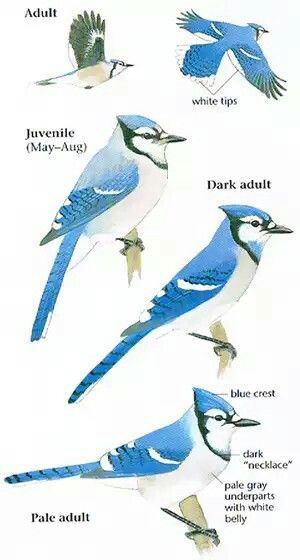
A pair of recently fledged blue jays
How big are baby Blue jays?
Baby Blue jays weigh around 5.5g at hatching with a body length of just 51 mm. By the fifth day, Blue jays already weigh approximately 20 to 28g and measure about 76 mm.
Why do you never see baby Blue jays?
Baby Blue jays won’t leave the nest for 17 to 22 days but are unable to fly for another week or so after fledging.
Once fledged, the chicks remain close to their parents. The parents often relocate away from the nest while staying within the confines of deep treetop foliage.
Blue jay fledglings are vulnerable and are pretty easy to spot if they’re roaming around on the ground. However, if you spot one, its parents are probably watching it (and you!) from a treetop perch, so think twice before touching or relocating it.
A blue jay fledgling on the ground
What is a baby Blue jay called?
There is no specific name for baby Blue jays. Just after they hatch, Baby Blue jays are called hatchlings.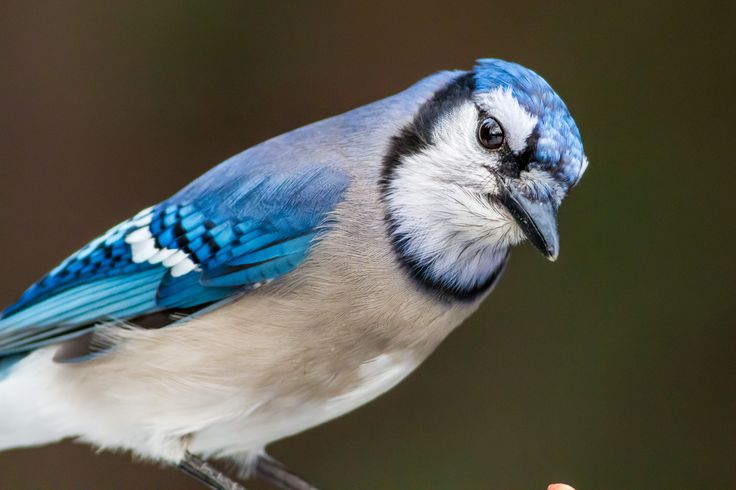 Then, they develop into nestlings while they spend all of their time in the nest. Finally, baby Blue jays become fledglings, juveniles, and fully grown adults.
Then, they develop into nestlings while they spend all of their time in the nest. Finally, baby Blue jays become fledglings, juveniles, and fully grown adults.
What do baby Blue jays eat?
Baby Blue jays eat whatever their parents bring them, including insects, berries, seeds and grains. While Blue jays also eat meat in the form of small animals and other birds, the young are unlikely to be able to digest it. Soft foods are preferable.
In the first few days after hatching, the male provides the vast majority of food, but the female will join if his haul is insufficient. Then, after a few days, the female typically joins the male to forage more feed for the hungry chicks.
After that, the male usually feeds the nestlings too, but the female has been observed reaching into the chicks’ mouths and redistributing food.
A blue jay feeding one of their chicks
Do both parents feed baby Blue jays?
In the first few days after hatching, the male does most of the foraging and feeds the nestlings. However, the female will often forcibly redistribute food by reaching into the nestlings’ mouths.
However, the female will often forcibly redistribute food by reaching into the nestlings’ mouths.
After around 4 to 5 days, the female typically joins the male. As the birds approach fledging, both birds feed the chicks. Parental feeding carries on for a week or two after the baby Blue jays fledge.
What do Blue jay eggs look like?
Blue jay eggs typically measure 28 mm x 20 mm and are predominantly ovular. colors vary from shades of blue, to green, olive and light brown.
They’re spotted or blotched with brownish markings, mainly towards the larger end. So while Blue jay eggs look similar to most corvid eggs, they vary a lot, especially regarding their color and shape.
A juvenile blue jay, perched on the fence
How long do Blue jay eggs take to hatch?
Blue jay eggs are incubated for around 17 to 18 days before hatching.
How many babies does a Blue jay have?
Female Blue jays typically lay between 2 to 7 eggs, but 4 to 5 is more common. It would be rare for all chicks to survive until adulthood.
It would be rare for all chicks to survive until adulthood.
When do Blue jays lay eggs?
Blue jays almost solely lay eggs in the months of March, April and May.
May egg-laying usually only occurs in the north, or when it’s particularly cold. In the south, egg-laying may start as early as early March, but rarely earlier.
- Michigan: early May
- Minnesota: late April
- Kentucky and Kansas: Mid April
- Arkansas: late March
- Florida: Early March
Three Blue Jay fledglings perched in a tree together
How do Blue jays feed their chicks?
Blue jay parents are presumed to partially regurgitate harder foods into the chicks' mouths, but probably feed most foods to the chicks whole. Larger pieces of food will be torn up before feeding.
Baby Blue jays are fed with berries, insects and seeds. Insects are ideal as they’re soft and high in protein and fats.
How long do baby Blue jays stay with their parents?
Blue jays fledge after just 17 to 21 days after hatching in most cases, but they’ll stay very close to the nest (within 25m or so usually) for another 2 to 3 weeks.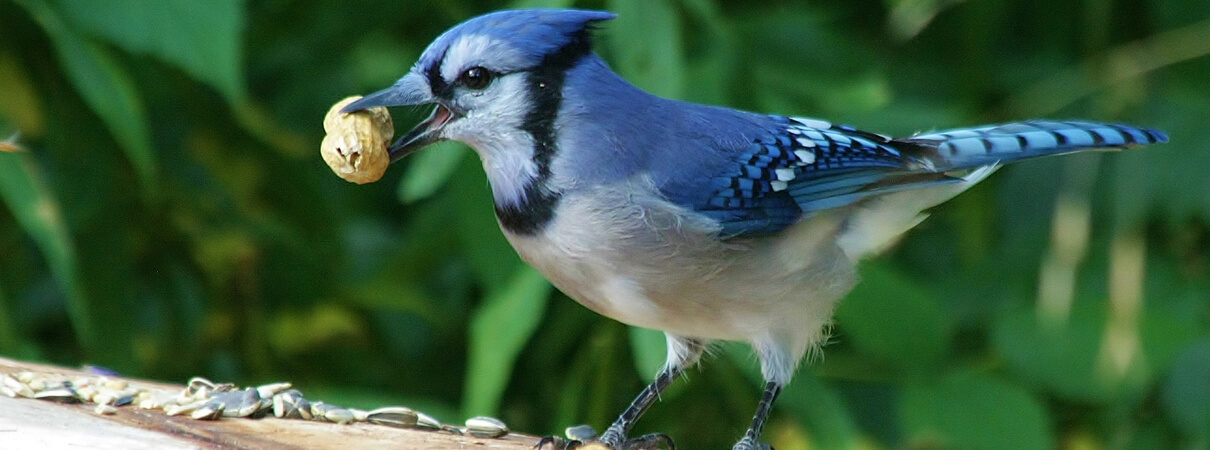
After that, young Blue jays usually stay within the family unit for another 2 to 3 months, at which point they’ve grown out most of their adult plumage and fly off to establish independent territories. Baby Blue jays often continue to harass their parents for food long into summer.
Close up of a baby blue jay
Do Blue jays have helpers?
Helpers are single unpaired birds that help a pair of birds with everything from nest building and incubation to brooding and feeding.
Blue jays sometimes have nest helpers, though this is rarer than it is for other Corvids, e.g. crows.
Blue jay helpers have been observed helping build the nest and feeding the young. It’s unclear whether they’re related to the pair (e.g. last year’s young), or whether they’re unrelated.
Expert Q + A
Question
When are baby blue jays most vulnerable to cats?
BirdFact Team
Generally speaking, baby blue jays are most likely to be predated by cats when they are in the nest - particularly whilst on the rim of the nest, and for the first few days after they fledge the nest.
Blue Jays can be pretty aggressive when it comes to defending their nests, which can often scare the predators away. With cats, similar to other predators, the parents usually will mob the cat in an attempt to scare it away and protect their young.
Ask a question
Do you have a question about this topic that we haven't answered? Submit it below, and one of our experts will answer as soon as they can.
What Do Baby Blue Jays Eat?
Gift Idea
The Birdfy Smart Feeder by Netvue uses AI technology to identify over 6000 species of birds right at your feeder! Easily share short videos with friends, family, and on social media. A great gift for any bird lover this holiday season!
(Get 10% off with code BFH at checkout!)
Buy Discounted For a Limited Time
Blue jays are an easily recognizable, perhaps even iconic, songbird. Their large size, blue feathers, and distinctive call mean that just about anyone can recognize a blue jay.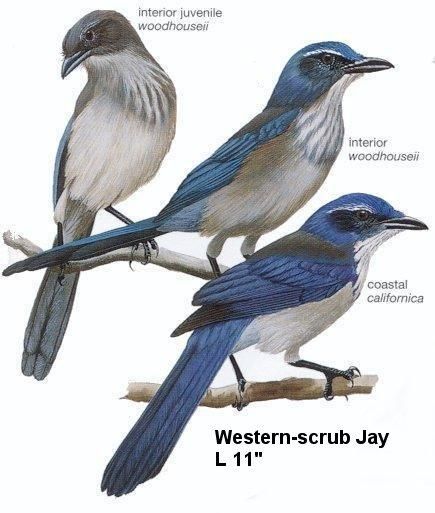 Adults can often be seen eating large acorns, and are drawn to feeders full of things like peanuts and sunflower seeds. They also have been known to occasionally raid the nests of other birds, eating their eggs and chicks. So we know what adult blue jays eat, but what do baby blue jays eat?
Adults can often be seen eating large acorns, and are drawn to feeders full of things like peanuts and sunflower seeds. They also have been known to occasionally raid the nests of other birds, eating their eggs and chicks. So we know what adult blue jays eat, but what do baby blue jays eat?
What Do Baby Blue Jays Eat?
As with most birds, baby blue jays eat more or less the same things that their parents eat. Adult blue jays bring nuts, seeds, insects and small animals back to the nest for their chicks. For at least six weeks after hatching, the chicks are totally dependent on their parents to bring them food, and the parents bring whatever they can find.
Do Baby Blue Jays Eat Worms?
If their parents bring them a worm, they’ll eat it. Caterpillars and seeds are probably more common, but earthworms certainly make their way into many baby blue jay’s diets. Worms are a little hard to find, since they’re usually underground, but occasionally a heavy rain or human activity brings a bunch of worms to the surface, and the blue jays will definitely go after them. The parents must also take size into consideration, very young nestlings often cannot yet eat large earthworms.
The parents must also take size into consideration, very young nestlings often cannot yet eat large earthworms.
How to Feed Baby Blue Jays
If you need to feed a baby blue jay, use either moist dog/cat food or commercially sold baby bird food, fed through an eye dropper. However in general you should not attempt to do this yourself, and we will talk about why below.
If you’ve found a nest with baby blue jays you suspect is abandoned, don’t jump to any quick conclusions. In most cases of a nest with begging babies, the adults are nearby finding food and will come back periodically to feed the young. Male and female blue jays both take turns feeding the young, however it has been observed that males may often do the majority of the feeding.
Some feedings can be very quick, and the adults will only stop by for a minute before leaving to find food again. Because you could easily miss this quick process, you would have to watch a nest non-stop (not a few minutes at a time) for at least a few hours before you could determine if the babies have potentially been abandoned.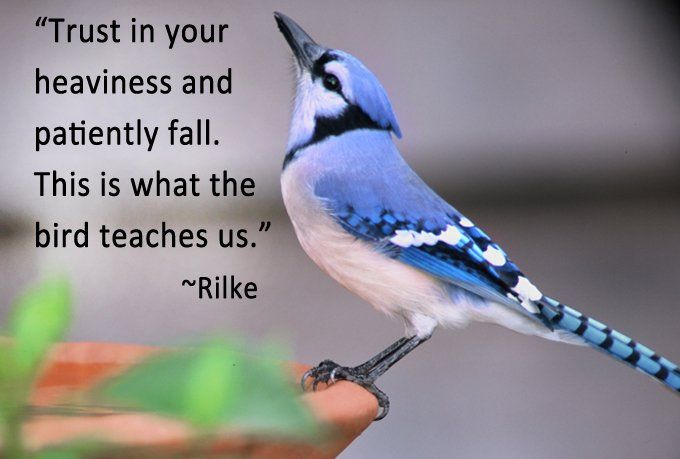
Contacting a Wildlife Rehab Expert
If you have determined that the baby blue jays do need help, it is important to contact a qualified bird rehabber. In many states, only certified rehab specialists are allowed to be in possession of wild birds. Not to mention they are trained in exactly how to care for them.
Care of baby birds can be very tricky. Many nestlings need to be fed every 20 minutes or so for 12 to 14 hours a day! That is a lot of constant time and attention. They also need balanced food with enough protein and nutrients to grow properly. This is why the knowledge and expertise of a rehabber is their best bet for survival.
If you get in touch with a rehabber that isn’t able to take the birds right away, they may instruct you on how to care for them until they can pick them up. For the short term, dog or cat food (moist, fed through a dropper), or specialty baby bird food mix, is often used.
To find a rehabber near you, Google search the name of your state plus “wildlife rehabilitation”, or check your states department of the environment page for a list of licensed rehabbers.
Do Blue Jays Really Raid Other Bird’s Nests?
This is a widely held belief, and it’s not entirely clear why this is so commonly believed. In fact, there’s not really much evidence to suggest that blue jays are nest-raiders. In a study performed on blue jay diet that looked at their stomach contents, researchers found remains of eggs or nestlings in only 1% of adult blue jays, which hardly makes them stand out as “egg snatchers” over other birds.
While blue jays are not big nest-raiders themselves, they have to be on guard against other birds. Crows, especially, will eat blue jay eggs or kill and eat their chicks.
Why Did a Blue Jay Attack Me?
Despite the fact that they are somewhat small in the world of wildlife, blue jays are surprisingly aggressive and fearless. Plenty of people have been attacked by angry blue jays, and most of them were just walking down the street or in their yard when it happened. Fortunately blue jays aren’t really capable of doing any damage, but it’s still an unnerving experience.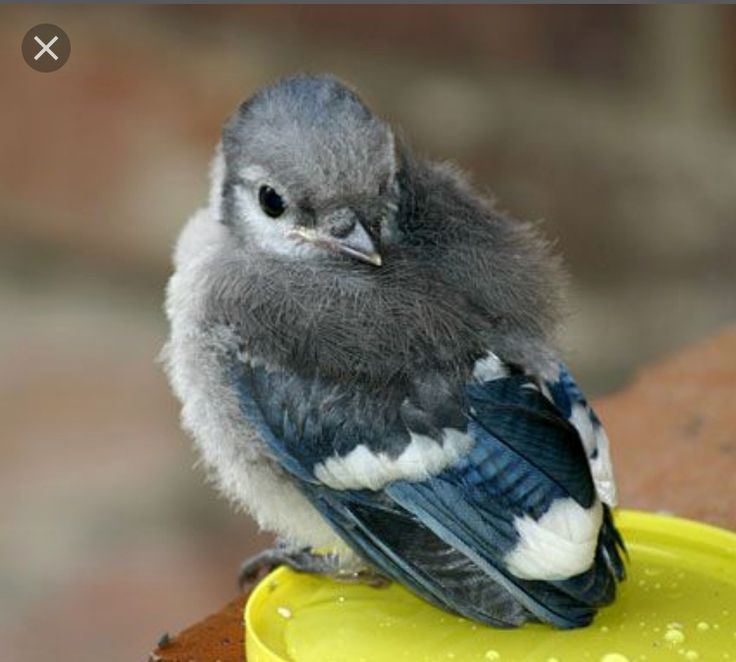
In all likelihood, if you’re dive bombed by a blue jay, you were walking too close to their nest. Blue jays like to build their nests high up in trees and they hide them well, so it’s rare to spot them. The parents, though, are fierce protectors and won’t hesitate to chase of potential predators.
This is especially true around May and June, when the babies are just learning to fly. This is when they’re at their most vulnerable, and the adults get extra protective of them. That’s when most blue jay attacks occur.
Do Blue Jays Like Acorns?
Acorns are a favorite food of blue jays, although they’re a bit too big for the babies to eat. That’s fine, since by the time acorns are available the babies will have left the nest and grown to adult size. Acorns are a favorite for blue jays, and each fall adult birds will hide somewhere between 3,000 and 5,000 acorns in the ground, saving them for the winter months.
In fact, blue jays are credited with spreading oak forests across the U.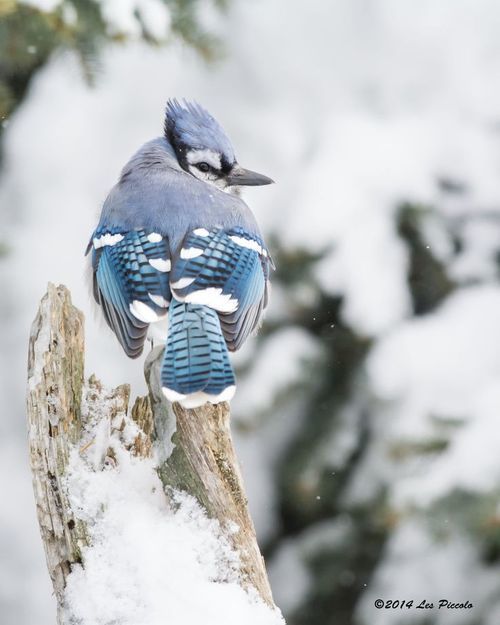 S. While they remember where they put most of those acorns, they always forget some of them, which means that each blue jay ends up planting a bunch of oak trees every fall.
S. While they remember where they put most of those acorns, they always forget some of them, which means that each blue jay ends up planting a bunch of oak trees every fall.
Conclusion
Baby blue jays eat just about anything their parents bring them. Mostly, that means seeds, nuts, and insects. If you find yourself caring for baby blue jays that have been abandoned while waiting for help from a rehabber, pet food or commercially sold baby bird food will help to meet their nutritional needs.
How to feed the found chick, how many times a day
If you find a chick, the first thing you need to do is determine its species. Feeding granivorous, insectivorous and predatory chicks have their own differences. But in the early stages of feeding, you can use the same feeding methods, and then, after finding out what kind of bird you found, transfer the chick to the appropriate feeding.
Here is one of the most common feeding options for granivorous and insectivorous chicks.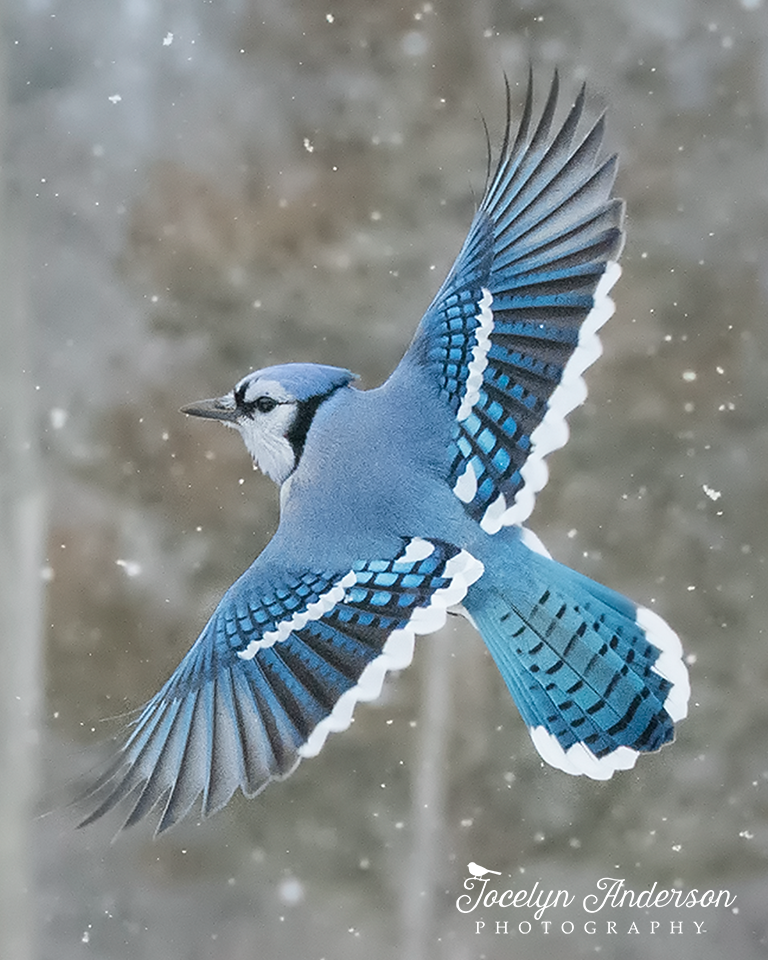 This nutrient mixture is well used for feeding for chicks and fledglings from the passerine family. To prepare our mixture, we need the following products: Boiled egg, low-fat cottage cheese, raw carrots, meat (beef, chicken, turkey), greens (lettuce, dandelion leaves, wood lice), hamarus and daphnia, Calcium gluconate (shell from boiled eggs) glycerophosphate , children's dry dairy-free porridge or boiled millet (without salt and fat on the water). nine0003
This nutrient mixture is well used for feeding for chicks and fledglings from the passerine family. To prepare our mixture, we need the following products: Boiled egg, low-fat cottage cheese, raw carrots, meat (beef, chicken, turkey), greens (lettuce, dandelion leaves, wood lice), hamarus and daphnia, Calcium gluconate (shell from boiled eggs) glycerophosphate , children's dry dairy-free porridge or boiled millet (without salt and fat on the water). nine0003
Action one. Boil the egg, free from the shell. We free the shell from the shell film. Grind the egg as much as possible, you can use a grater with small holes.
Second step. Boiled meat, it is better to take the pulp from the breast of a turkey or chicken and also chop or divide into fibers. The mixture will require meat 40 (for granivorous) and 60 grams (for insectivorous).
Third step. Take washed carrots of a small size, grate them on a fine grater, then squeeze the juice and we will use the remaining pulp. nine0003
Fourth step. We take not sour and not fatty cottage cheese. Cottage cheese should have 0% fat content, anything above is considered fat for poultry. We need 90-110 grams of cottage cheese. Sour cottage cheese must be boiled twice changing the water and then it will be suitable.
We take not sour and not fatty cottage cheese. Cottage cheese should have 0% fat content, anything above is considered fat for poultry. We need 90-110 grams of cottage cheese. Sour cottage cheese must be boiled twice changing the water and then it will be suitable.
Step five. You can use greens to add the mixture, but you can do without it for the chicks. And so you can take the greens listed above, chop and add 1.5 teaspoons to the mixture.
Action six. To the above ingredients, add 1.5 -2 tsp. dairy-free porridge or boiled millet (well boiled, without salt and fat in the water). nine0003
Step seven. To the mixture we add the shell from the boiled egg, which must first be ground in a coffee grinder, plus one fourth of the crushed tablet of glycerophosphate. If it is not possible to find glycerophosphate, then you can purchase bone meal and add one fourth tsp. in powder form. At the very least, the shells are enough for now.
Step eight. We take chopped hamarus and daphnia and add about 1 tsp to the resulting mixture. Then we mix everything, it turns out a very thick, crumbly porridge, it should not stick to the fingers. If the mixture is sticky, you can add dairy-free porridge or powdered cereals. nine0003
Then we mix everything, it turns out a very thick, crumbly porridge, it should not stick to the fingers. If the mixture is sticky, you can add dairy-free porridge or powdered cereals. nine0003
From the resulting mixture we roll small balls no larger than a small pea, focus on the size of the chick's beak. You can feed 2-5 balls at a time and after each feeding drink plain water from an insulin syringe with a removable needle (without a needle) 4-6 drops. A week-old chick should be fed every 1-1.5 hours, older than two weeks of age every 2-4 hours, at three and four weeks of age you can feed 3-4 times a day. Do not forget that the chick is growing and, accordingly, one-time portions of food are growing. A very important point, do not forget to warm the chicks, because at their age they themselves cannot maintain normal body temperature. Warming up promotes better assimilation of feed. Don't forget to control your chick's weight. If possible, show the chick to a specialist. To control the work of the intestines, you can take the litter from the chick for a coprogram, this is an analysis of the digestibility of the feed.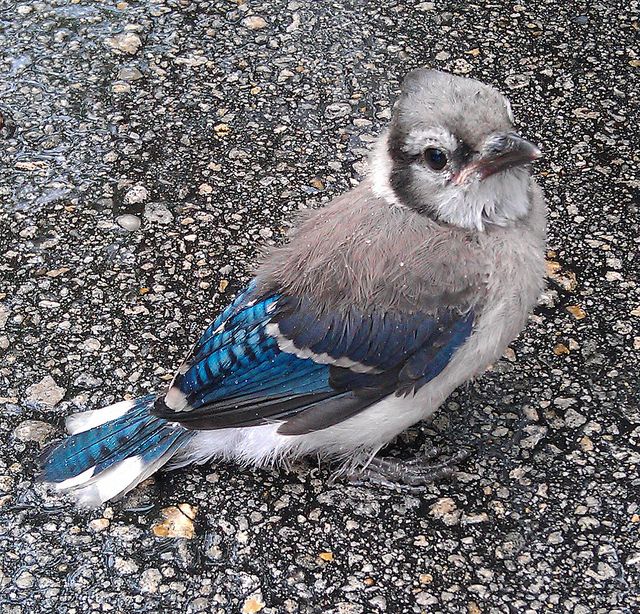 nine0003
nine0003
Take care and love your feathered friends and they will love you back.
Veterinarian ornithologist
Chuguevsky VV
Veterinary clinic Bambi.
You can ask an ornithologist on the forum.
description of the bird, behavioral features, species and habitat (range)
Jay is a bird of the corvid family with bright plumage. It is found in Europe, North Africa, Asia, the Caucasus. In the northern latitudes, the jay is a migratory bird, in warm places it is a settled bird. Prefers to settle in forests and woodlands. nine0003
In the article we will consider what types of jays are, the features of their lifestyle, reproduction and nesting.
This is what a common jay looks likeFeatures and lifestyle
Jays attract the eye with beautiful bright plumage. These birds can very skillfully imitate different sounds. Jay body length is about 45 cm, weight - no more than 200 g. The beak is short and sharp, legs are long, fingers have tenacious claws. The plumage deserves special attention:
The plumage deserves special attention:
- there is a small motley tuft on the head, a gray-white ornament on the forehead; nine0045
- neck, nape, abdomen are beige-pink with a transition of shades;
- in the central part under the beak the throat is white;
- black stripes on the sides of the beak;
- The middle of the wings is covered with blue-blue stripes, and their edges have a black tint.
In chicks, the plumage color is not as bright as in adult birds. Males differ from females only in larger sizes. In flight, the jay looks especially beautiful, exposing all plumage to the public. Descending to the ground, she moves in jumps. nine0003
INTERESTING FACT. The color of the iris in jays varies with age. In chicks it is dark brown, in adults it is light blue.
Jay is diurnal, but it is difficult to see them in nature. Wild birds are quite shy and always try to hide when they hear any sounds and rustles. Often they make sharp cries, notifying relatives of the approach of danger. The exception is birds living in the city. They get used to people and make it possible to get closer to a distance of 4-5 meters. nine0003
Often they make sharp cries, notifying relatives of the approach of danger. The exception is birds living in the city. They get used to people and make it possible to get closer to a distance of 4-5 meters. nine0003
Jays do not have a beautiful voice. Basically, they make whistles, clicks, crackles, but they easily repeat the sounds of other birds or animals. If they live in a village, they can easily imitate the meow of a cat, the voice of a goat or a sheep, the creak of a door, the knock of an ax. Birds that are kept in captivity are able to repeat words after a person. Interestingly, they imitate not only sounds, but also intonations.
See how a jay imitates a cat's meow:
Jays love to live in the canopy of trees, they rarely come down to the ground or fly in open areas. Usually they live in pairs, but with the onset of cold weather they gather in groups of up to 30 pieces. So they are saved from the cold. nine0003 Two jays approaching each other
Natural enemies
Birds of prey and some animals prey on jays. Man negatively affects the habitat of birds. After visiting a field sprayed with pesticides or other poisonous substances, birds often die from poisoning. In order to preserve the harvest of grapes, apples, pears and other fruits, people set up various traps for birds into which jays fall.
Man negatively affects the habitat of birds. After visiting a field sprayed with pesticides or other poisonous substances, birds often die from poisoning. In order to preserve the harvest of grapes, apples, pears and other fruits, people set up various traps for birds into which jays fall.
What they eat
The basis of the diet is food of plant origin, such as nuts, acorns, raspberries, mountain ash, etc. Jays often host in the fields where they find wheat, rye, barley, sunflower, and oats. At the end of spring and before the onset of cold weather, they consume animal food: May beetles, bronze beetles, silkworm caterpillars. Insects are necessarily included in the menu of chicks. With a lack of food, predatory instincts can manifest in a jay - it can kill a mouse, lizard, frog or small bird. nine0003
With the onset of cold weather, jays stock up. They carry food in their beaks and hide it under the bark of a tree, in dry grass or leaves. Stocks for the winter by weight can be 3-4 kg.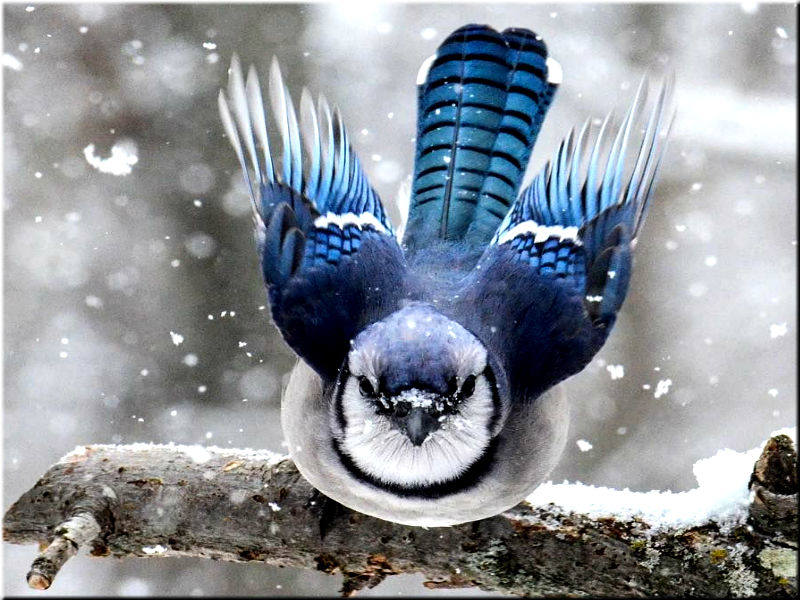 Often, birds forget about winter supplies, and with the onset of spring, the seeds germinate. Thus, they contribute to the spread of plants and trees over long distances.
Often, birds forget about winter supplies, and with the onset of spring, the seeds germinate. Thus, they contribute to the spread of plants and trees over long distances.
In winter, in search of a food base, jays move closer to human habitation. Then they can often be seen in villages, suburbs and city parks. nine0003
Jay species
There are more than 40 species of these birds in the world. However, ornithologists argue that there may be unexplored species living in places inaccessible to humans. The most common are the following species:
- Common jay - lives in the forests of Europe, Asia and northern Africa. Among other species, it is considered the largest.
- Decorated jay - distinguished by a dark purple coloring of the head and wings, a brown tone of the back and abdomen. They are only distributed in Japan. nine0045
- Himalayan jay - lives in the Himalayas. The feather color is very diverse: the head is black and resembles a crow, the color of the body and wings is similar to the common jay, but the plumage on the back has a gray tint.

- Saxaul jay lives in thickets of bushes and steppes of Mongolia. In appearance, it resembles a small crow. It is known that this bird prefers to run or jump, but it flies poorly.
- Crested jay has a long crest and grey-brown plumage. There is a black and white patch on the neck. Lives in Thailand and Malaysia. Unlike other species, it is not afraid of people. Young birds are distinguished by a striped variegated color, in the process of growing up, the plumage changes to black. nine0045
- American blue jay - lives in mixed and pine forests of the central regions of America. The main color of its plumage is blue-blue, the abdomen and feathers around the eyes are white. The edges of the wings and tail are white.
- The black-headed jay is a bird that lives in Mexican forests. The structure of the tail is very similar to the magpie. The bird has a black crest that curls up when excited. The plumage of the back, neck and tail is blue, the belly is white. The voice of these birds resembles the cry of parrots.
 nine0045
nine0045 - Bush Blue Jay - This species lives in the forested areas of Florida. The head, wings and back have a blue plumage, from below - light gray. This species is rare and listed in the Red Book.
- The Yucatan jay is a rare species, their representatives are very afraid of people, so it is difficult to see them. They live in the forests of North America in the ruins of old buildings. The head and body are covered with black plumage, the wings and tail are bright blue.
- The Mockingjay is a species of bird created by crossing female Mockingjays and male Talking Jays. nine0045
Unfortunately, some species are in decline. This is due to thoughtless human activity, especially deforestation - the main habitat of these beautiful birds.
Red Book blue jay in the wildReproduction and care of chicks
Jays reach sexual maturity in the first year of life. Birds move to an active search for a partner in early spring, pairs create for life. Males try to attract females by flying over the crowns of trees and arranging real concerts. Their song includes sounds made by other birds, as well as imitations of forest noise. nine0003
Their song includes sounds made by other birds, as well as imitations of forest noise. nine0003
Jay nest
A new pair starts nest building in April. It can be used multiple times by the same parents. Construction takes at least a week. The nest, about 20 cm in diameter, is cup-shaped and 8-10 cm deep. Tree branches serve as its base, inside the surface is covered with hay, moss and feathers. The clutch usually contains 5-7 dark green eggs. Sometimes it happens that a marten or a ferret ruins the nest. If this happened before summer, the female may lay her eggs again. Incubation is done by both parents in turn. nine0003
Description and feeding of chicks
Chicks hatch in 2.5-3 weeks. They are very gluttonous and can take food from each other. With a lack of insects, some of the babies die. If there is enough food supply, then after 3 weeks the chicks leave the nest. However, parents still feed and take care of them until the beginning of autumn.
Interesting facts about jays
Jays sometimes show remarkable intelligence and ingenuity.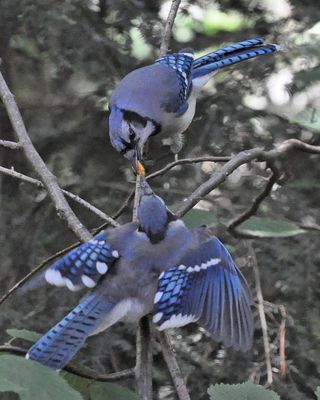 Thanks to their sharp mind and ingenuity, they survive in difficult conditions. Here are some interesting facts about the jay:
Thanks to their sharp mind and ingenuity, they survive in difficult conditions. Here are some interesting facts about the jay:
- To make a pantry with supplies, these birds can ruin someone else's workpiece. Jays, having spied on relatives or other birds, steal food from them and hide them in their secret places. With a large accumulation of jays, you can see how a kind of competition takes place in the search for and transfer of someone else's food. They do not disdain pantries of squirrels, chipmunks and other animals. American jays steal acorns from woodpeckers. They are very cautious, and before hiding the prey they look around, fly from place to place, and, making sure that no one is watching them, they hide supplies. nine0045
- Jays get rid of parasites in an interesting way. They find an anthill and walk on it or sit on top. Ants spray acid on the bird, which kills the parasites that have appeared on the feathers.
- Jays live for about 7 years in the wild.
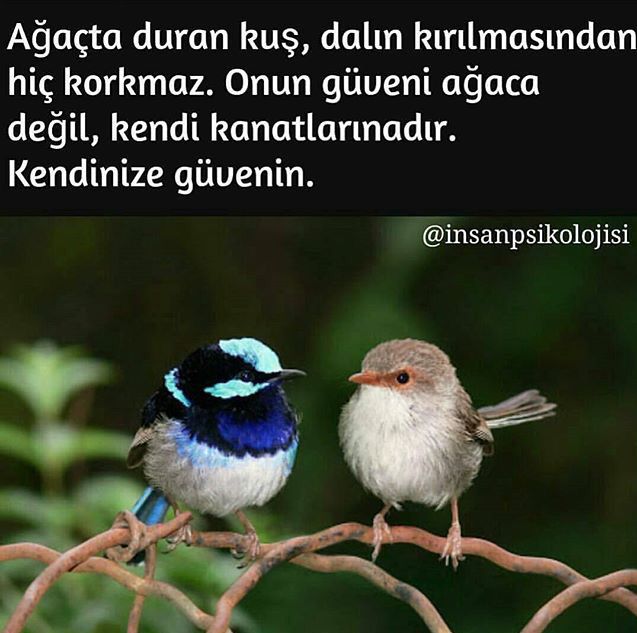 In favorable climatic conditions and with a good food supply, some birds lived up to 16 years. It is known that a wild jay chick can be tamed. With proper care in captivity, birds can live up to 20 years.
In favorable climatic conditions and with a good food supply, some birds lived up to 16 years. It is known that a wild jay chick can be tamed. With proper care in captivity, birds can live up to 20 years.
Keeping jays at home
Jays and other corvids are very intelligent and sociable, so they are often kept as pets. The omnivorous nature of these birds makes it easier for the owner to find food. It is enough to feed the bird with what is in the refrigerator. But to maintain good health, the jay needs a varied menu.
Flying feathers and droppings are difficult to keep, so it is better to settle the bird in a spacious aviary, and not in a cage. It should be equipped with a large branch with many knots or several perches. Shoots of living trees are not suitable for this purpose; it is better to choose a long-fallen dry tree. An excellent option would be strong oak branches. The floor of the aviary must be covered with an easily washable material, for example, linoleum. Sawdust is poured on top or paper is spread. nine0003
Sawdust is poured on top or paper is spread. nine0003
The desire to have a jay must be well thought out so that later it does not become a burden. You should not buy a bird for a child, as the interests of children change quickly.
You need to buy a young bird - they are quickly tamed and get used to the owner. An adult wild bird cannot be domesticated. Even if you take home a tamed jay from another owner, the likelihood that it will get used to you is not great. In captivity, birds are kept alone, otherwise two or more individuals will fight among themselves and cripple each other. nine0003
What to feed
Jays and other birds of the corvid family can be fed with boiled minced meat, small pieces of meat, cottage cheese, eggs, various cereals, grated vegetables, fruits, nuts. Be sure to add minerals, the bird needs them, especially in the process of molting. It is advisable to give minerals in the form of a special "bird stone", which is sold in almost any pet store. You can offer your pet whole raw eggs. The bird will drink the internal contents, and eat the shell as mineral feed. nine0003
The cage or aviary must have clean water in a drinking bowl and separately in a bathing container. To take baths, pour water into a wide tray with high sides or a basin.
Jay with food in the aviaryWalk
To keep the bird healthy, you need to let it fly. You can do this in the apartment, but it is better - in the yard under the supervision of the owner. In this case, care should be taken, as a trusting bird can suffer at the hands of other people. nine0003
INTERESTING FACT. Jays are good at distinguishing familiar people from strangers. They well distinguish the voice of the owner and fly to his call.
Toys and entertainment
Jays are fidgety, so they should be given some toys. Like most members of the corvid family, jays are very fond of shiny things. You can put foil, coins, a ball, a box with counting sticks and so on in a cage. If you do not provide them with entertainment, they will find something to play on their own, for example, they will pull the wallpaper, tear the leaves of indoor plants, peck at watches and jewelry. nine0003
If you do not provide them with entertainment, they will find something to play on their own, for example, they will pull the wallpaper, tear the leaves of indoor plants, peck at watches and jewelry. nine0003
To teach a jay human speech, you need to communicate with it regularly. You can call her by name, pronounce simple phrases, and the result will not be long in coming. But it is important to remember that only a tame jay can be taught to speak. Adult birds that were taken home rarely repeat words after a person.
Where to buy a jay
It is better to buy a jay at the Bird Market, but these birds are not always on sale. The common jay is not a rare species, so you can take a young individual from the nest. But this must be done with the utmost care. You can not take very small chicks - it will be very difficult to feed them. A grown-up baby, who is about to leave the nest, will do. Also, you can not come close to the chicks when the parents are nearby. You should wait until they fly away and take one chick.

